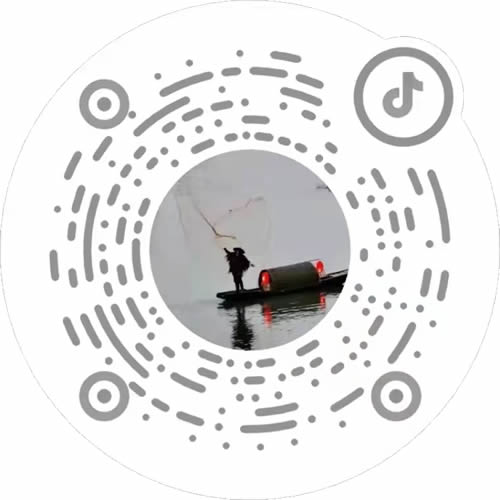Cloze Test
Directions: There are 6 passages in this part of the exercise. Each passage has 15 blanks. For each blank there are four choices marked A), B), C) and D) on the right side of the paper. You should choose the ONE that best fits into the passage.
Passage 1
It is well known that teenage boys tend to do better 1)______ math than girls, that male high school students are more likely than their female counterparts 2)______ advanced math courses like calculus, that virtually all the great mathematicians 3)______ men. Are women born with 4)______ mathematical ability? Or does society’s sexism slow their progress? In 1980, two Johns Hopkins University researchers tried 5)______ the eternal nature/nurture debate. Julian Stanley and Camilla Benbow 6)______ 10,000 talented seventh and eighth graders between 1972 and 1979. Using the Scholastic Aptitude Test, in which math questions are meant to measure ability rather than knowledge, they discovered 7)______ sex differences. 8)______ the verbal abilities of the males and females 9)______ differed, twice as many boys as girls scored over 500 (on a scale of 200 to 800) on mathematical ability; at the 700 level, the ratio was 14 to 1. The conclusion: males have 10)______ superior mathematical reasoning ability.
Benbow and Stanley’s findings, 11)______ were published in "Science", disturbed some men and 12)______ women. Now there is comfort for those people in a new study from the University of Chicago that suggests math 13)______ not, after all, a natural male domain. Prof. Zalman Usiskin studied 1,366 tenth graders. They were selected from geometry classes and tested on their ability to solve geometry proofs, a subject requiring 14)______ abstract reasoning and spatial ability. The conclusion 15)______ by Usiskin: there are no sex differences in math ability.
1.
A. at
B. to
C. of
D. about
2.
A. in tackling
B. tackling
C. to tackle
D. about tackling
3.
A. might be
B. have been
C. must be
D. had been
4.
A. smaller
B. less
C. fewer
D. not more
5.
A. to settle
B. to set
C. settling
D. setting
6.
A. were tested
B. have tested
C. were testing
D. had tested
7.
A. distinct
B. instinct
C. remote
D. vague
8.
A. Since
B. However
C. As
D. While
9.
A. scarcely not
B. virtually
C. largely
D. hardly
10.
A. superficially
B. universally
C. inherently
D. initially
11.
A. as
B. that
C. which
D. all
12.
A. few
B. not a few
C. not few
D. quite few
13.
A. be
B. were
C. was
D. is
14.
A. none of
B. neither of
C. either
D.
[1] [2] [3] [4] 下一页
both
15.
A. got
B. gained
C. reached
D. accomplished Passage 2
We all know that a magician does not really depend on "magic" to perform his tricks, but on his ability to act at great speed. 16)______, this does not prevent us from enjoying watching a magician 17)______rabbits from a hat. 18)______ the greatest magician of all time was Harry Houdini who died in 1926. Houdini mastered the art of 19)______. He could free himself from the tight test knots or the most complicated locks in seconds. 20)______ no one really knows how he did this, there is no doubt 21)______ he had made a close study of every type of lock ever invented. He liked to carry a small steel needle like tool strapped to his leg and he used this in place of a key.
Houdini once asked the Chicago police to lock him in prison. They 22)______ him in chains and locked him up, but he freed himself 23)______ an instant. The police 24)______ him of having used a tool and locked him up again . This time he wore no clothes and there were chains round his neck, waist, wrists, and legs; but he again escaped in a few minutes. Houdini had probably hidden his "needle" in a wax like 25)______ and dropped it on the floor in the passage. 26)______ he went past, he stepped on it so that it stuck to the bottom of his foot. His most famous escape, however, was 27)______ astonishing. He was heavily chained up and enclosed in an empty wooden chest, the lid of 28)______ was nailed down. The 29)______ was dropped into the sea in New York harbor. In one minute Houdini had swum to the surface. When the chest was 30)______, it was opened and the chains were found inside.
16.
A. Generally
B. However
C. Possibly
D. Likewise
17.
A. to produce
B. who produces
C. produce
D. how to produce
18.
A. Out of the question
B. Though
C. Probably
D. Undoubted
19.
A. escaping
B. locking
C. opening
D. dropping
20.
A. Surprisingly
B. Obviously
C. Perhaps
D. Although
21.
A. if
B. whether
C. as to
D. that
22.
A. involved
B. closed
C. connected
D. bound
23.
A. at
B. by
C. in
D. for
24.
A. rid
B. charged
C. accused
D. deprived
25.
A. candle
B. mud
C. something
D. substance
26.
A. As
B. Usually
C. Maybe
D. Then
27.
A. overall
B. all but
C. no longer
D. altogether
28.
A. it
B. which
C. that
D. him
29.
A. chest
B. body
C. lid
上一页 [1] [2] [3] [4] 下一页
D. chain
30.
A. brought up
B. sunk
C. broken apart
D. snapped Passage 3
Who won the World cup 1998 football game? What happened at the United Nations? How did the critics like the new play? 31)______ an event takes place, newspapers are on the streets giving the details. Wherever anything happens in the world, reporters are on the spot to gather the news. Newspapers have one basic 32)______, to get the news as quickly as possible from its source, from those who make it to those who want to 33)______ it. Radio, telegraph, television, and 34)______ inventions brought competition for newspapers. So did the development of magazines and other means of communication. 35)______, this competition merely spurred the newspapers on. They quickly make use of the newer and faster means of communication to improve the 36)______ and thus the efficiency of their own operations. Today more newspapers are 37)______ and read than ever before. Competition also led newspapers to branch out into many other fields. Besides keeping readers 38)______ of the latest news, today’s newspapers educate and influence readers about politics and other important and serious matters. Newspapers influence readers’ economic choices 39)______ advertising. Most newspapers depend on advertising for their very 40)______. Newspapers are sold at a price that 41)______ even a small fraction of the cost of production. The main 42)______ of income for most newspapers is commercial advertising. The success in selling advertising depends on a newspaper’s value to advertisers. This 43)______ in terms of circulation. How many people read the newspaper? Circulation depends somewhat on the work of the circulation department and on the services or entertainment 44)______ in a newspaper’s pages. But for the most part, circulation depends on a newspaper’s value to readers as source of information 45)______ the community, city, country, state, nation and world and even outer space.
31.
A. Just when
B. While
C. Soon after
D. Before
32.
A. reason
B. cause
C. problem
D. purpose
33.
A. make
B. publish
C. know
D. write
34.
A. another
B. other
C. one another
D. the other
35.
A. However
B. And
C. Therefore
D. So
36.
A. value
B. ratio
C. rate
D. speed
37.
A. spread
B. passed
C. printed
D. completed
38.
A. inform
B. be informed
C. to be informed
D. informed
39.
A. on
B. through
C. with
D. of
40.
A. forms
B. existence
C. contents
D. purpose
41.
A. tries to cover
B. manages to cover
C. fails to cover
D. succeeds in
42.
A. source
B. origin
C. course
D. finance
43.
A.
上一页 [1] [2] [3] [4] 下一页
measures
B. measured
C. is measured
D. was measured
44.
A. offering
B. offered
C. which offered
D. to be offered
45.
A. by
B. with
C. at
D. about The United States is well known for its network of major highways designed to help a driver get from one place to another in the shortest possible time. 46)______ these wide modern roads are generally 47)______ and well maintained, with 48)______ sharp curves and straight sections, a direct route is not always the most 49)______ one. Large highways often pass 50)______ scenic areas and interesting small towns. Furthermore, these highways generally 51)______ large urban centers, which means that they become crowded with 52)______ traffic during rush hours, 53)______ the "fast, direct" route becomes a very slow route.
However, there is almost always another route to take 54)______ you are not in a hurry. Not far from the 55)______ new "superhighways", there are often older, 56)______ heavily traveled roads which go through the countryside. 57)______ of these are good two lane roads; others are uneven roads curving through the country. These secondary routes may go up steep slopes, along high 58)______, or down frightening hillside to towns 59)______ in deep valleys. Through these less direct routes, longer and slower, they generally go to places 60)______the air is clean and scenery is beautiful, and the driver may have a chance to get a fresh, clean view of the world.
46.
A. Although
B. Since
C. Because
D. Therefore
47.
A. stable
B. splendid
C. smooth
D. complicated
48.
A. little
B. few
C. much
D. many
49.
A. terrible
B. possible
C. enjoyable
D. profitable
50.
A. to
B. into
C. over
D. by
51.
A. lead
B. connect
C. collect
D. communicate
52.
A. large
B. fast
C. high
D. heavy
53.
A. when
B. for
C. but
D. that
54.
A. unless
B. if
C. as
D. since
55.
A. relatively
B. regularly
C. respectively
D. reasonably
56.
A. and
B. less
C. more
D. or
57.
A. All
B. Several
C. Lots
D. Some
58.
A. rocks
B. cliffs
C. roads
D. paths
59.
A. lying
B. laying
C. laid
D. lied
60.
A. there
B. when
C. which
D. wher
上一页 [1] [2] [3] [4]













